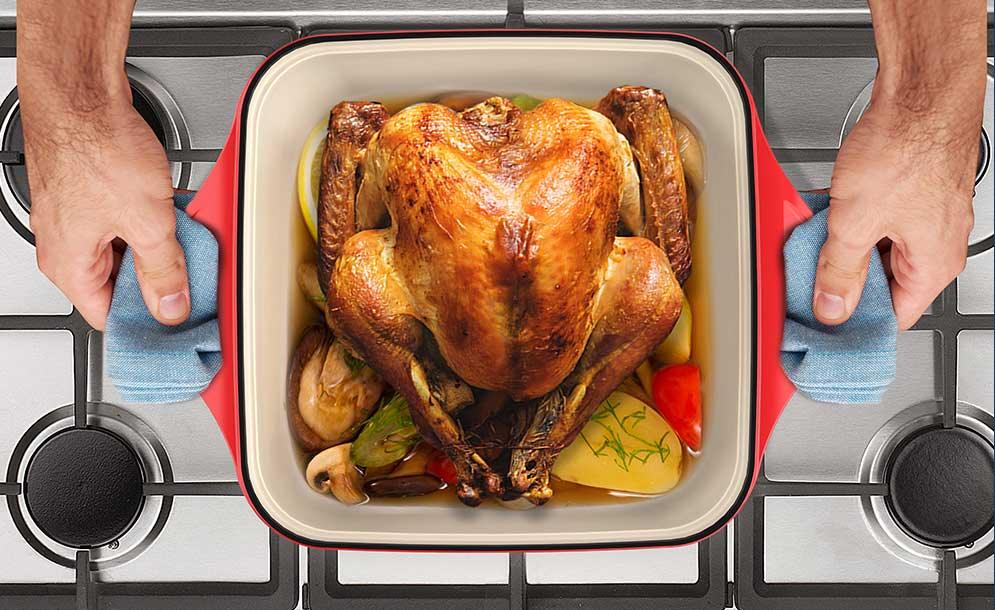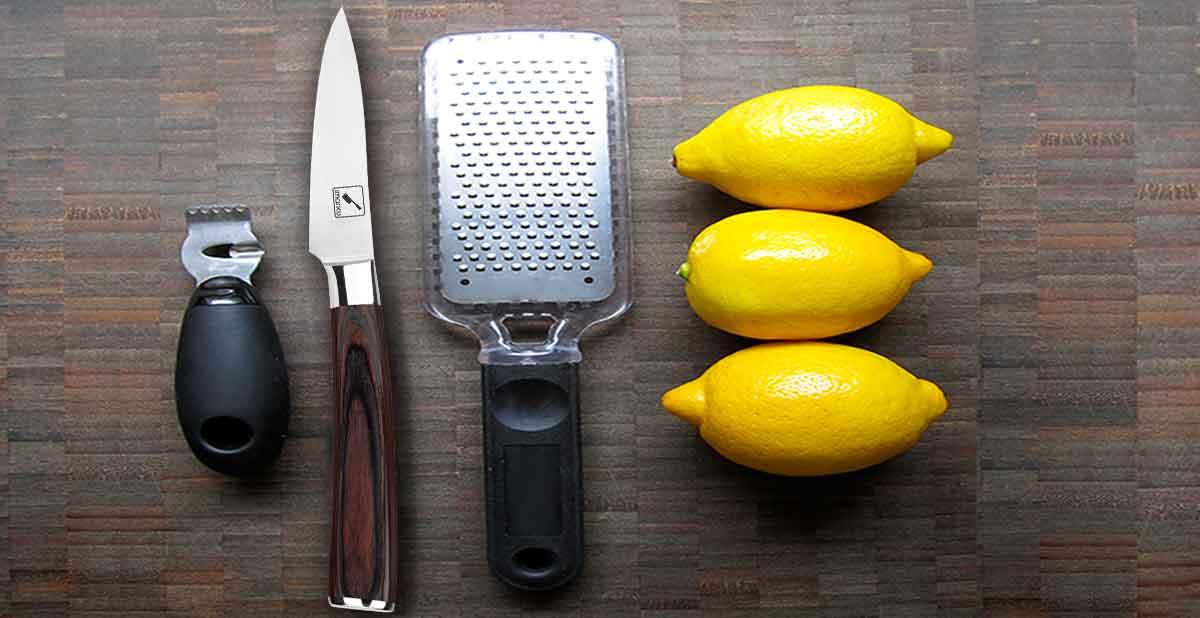TABLE OF CONTENTS
Dutch oven cooking has been popular in the United States since the 17th century, and it’s easy to see why; who doesn’t love coming home to the aroma of a slow-cooked meal bubbling on the stove? With proper care, your dutch oven will last you for years, which makes it worthwhile to learn how to use it properly.
Dutch ovens are versatile pieces of cookware and come in different types like cast iron, nonstick, and enameled pots and pans.
Here are some frequently asked questions about dutch ovens, along with our answers to help you better understand how to get the most from your investment.

Do you really need a dutch oven?
Sure enough, not everyone needs a dutch oven. But if you are cooking for a large family or group of friends or just like to cook big meals with your family on the weekends, then investing in a dutch oven is worth it. I’ve found that you can use it for so many different types of dishes. From soups and stews to roasted chicken and breads. Even desserts may be prepared with them.
What are the different types of dutch ovens?
There are four main types of dutch ovens. The most common is the standard cast iron dutch oven which is what most people think of when they hear the word dutch oven. It's a large, heavy pot with a lid. Others include enameled cast iron, ceramic, and stainless steel. All have their pros and cons, so it's worth reading up on each type to find out what you need in your cooking repertoire.
What material is best for a dutch oven?
Well, to decide on the best material to go for in a dutch oven, you need to consider what each is suited to do.
Cast iron is great for general cooking since it's heavy duty and evenly distributes heat from all sides; stainless steel, nonstick, and ceramic are lightweight and less expensive but not as good at retaining heat as cast iron; aluminum isn't as durable or as good at distributing heat as cast iron or stainless steel, but can be affordable if you're just looking for something simple to use.
Can a Dutch Oven Go in the Oven?
Yes, a Dutch oven can go in the oven! You could be unsure about your motivation for doing this, but some recipes call for pre-heating the dutch oven before putting it in the conventional oven. Plus, it will help your food cook more evenly by surrounding it with the heat on all sides.
Can a cast iron Dutch oven go in the oven?
Yes, cast Iron material is ovenproof; thus, the dutch cookware will work just fine in the conventional oven.
Can a ceramic dutch oven go in the oven?
Yes, so long as you maintain the oven temperature below 550 degrees Fahrenheit, a ceramic will be safe to bake.
Can stainless steel dutch ovens go in the oven?
As long as the cookware doesn't have any wooden or plastic handles attachments, stainless steel is oven-safe within 500 degrees Fahrenheit.

imarku Dutch Oven
At 3.5 quarts or 5 quarts, it's the perfect size for a smaller family or couple who likes to cook for two, and the included self-circulating bump design lid can double as a skillet or griddle if needed. The porcelain enamel coating is easy to clean by hand or in your dishwasher - it'll never peel off like paint would. It's oven-safe up to 500 degrees Fahrenheit and has a lifetime warranty on its manufacturing defects.
The square diamond shape is not only stylish but increases the range of things you can do with this pot. Whether desserts, beef, seafood, stews, baking or stir-frying, the iMarku dutch oven never disappoints.
What really sets this dutch oven apart is its versatility. Not only can it be used on any cooking surface, including gas, electric, ceramic, induction, and outdoor grills, but it's also perfect for use in your oven. It even has a unique condensation lid design that helps you steam your food to perfection. This also makes it a great option for sous vide cooking. You can even take it camping as it's lightweight and easy to transport. The iMarku Dutch oven truly is a one-pot-wonder.
The vibrant colors and the glossy finish will help make your kitchen look new again! Plus, all the features allow you to use it in more ways than other brands will allow.
How Do I Cook with My Dutch Oven?
Cooking with a dutch oven is as easy as using any other pot or pan.
First, you need to preheat the oven. Once it reaches the desired temperature, add some butter or oil to the pot and place it in the oven.
Cook for one or two hours on low heat. You will know when it is done when you can see that the food has browned nicely on top. Remove from the oven and enjoy!

Some general dutch oven cooking tips to remember include:
- Low and slow is the best: The higher the heat, the more likely your food will be burnt to a crisp.
- If you are baking something, ensure there is plenty of room around it so that air circulates evenly.
- When stirring soup or sauce in your dutch oven, use long-handled spoons so that you don't accidentally get burned by steam from your pot.
- Allow flavor to develop in a separate dish to preserve the flavors, then combine them at the end.
- Ensure all the attachments to the cookware are heat-resistant.
- Care for and maintain your dutch oven regularly.
- Clean your dutch oven after every use and remove any debris left behind before storing.
Following these simple guidelines will give you no trouble cooking anything in your dutch oven!
What should you not use a Dutch oven for?
There are as many things you shouldn't do with your dutch oven as there are those that you can do.
Here are a few of the top ones to avoid:
- Don't expose it to sudden changes in temperature, for example, placing the hot cookware in cold water. This should be particularly avoided with enameled and ceramic dutch ovens.
- Don't use the pan in the microwave because metal will arc when exposed to microwave radiation.
- Do not try to clean it with abrasives such as steel wool or harsh soap; Doing so would only scrape off the seasoning or the enamel finish.
- Avoid metallic utensils, especially when working with ceramic and enameled dutch ovens. This ensures the non-stick surface lasts as long as it should.
- Don't cook at the highest heat level all the time, as this could result in uneven heating and food sticking to the pot. Opt instead for medium-high or medium.
- Never place frozen foods into a preheated pot unless it has been specifically designed for cooking from frozen withstanding high temperatures!
- Do not preheat the pot to the highest permissible heat setting; this is usually too hot and may burn some foods.
- Remember to coat the outside of your pot with vegetable oil before storage if you want to maintain the integrity of the non-stick coating on an enameled or ceramic dutch oven.
- When cleaning, don’t use anything other than gentle dishwashing liquid, a soft sponge, or a cloth (as advised by Imarku).
- Do not store the pot while it's still wet.
How to clean a dutch oven?
Dutch ovens are built to withstand a lot of abuse, but there will come a time when you need to clean them. The best way to do this is by considering what material your dutch oven is. Cast iron and enameled cast iron are the two most popular materials. So, how do you clean these pots?

1. Cleaning a cast iron dutch oven
Wipe down any residue on the pot using a paper towel or a moist kitchen towel.
Fill the pot with water ensuring any sticky residues are below the water level. Place on the burner and boil the water to loosen the stuck debris.
Let the pot cool down and scrub the interior with a rubber scrubber. You can use a little dish soap.
Rinse the pot and pat it dry with a paper towel. You can also place it in the oven for 10 minutes on medium heat to ensure it's dry.
Apply a thin oil coating on the pan using a paper towel.
2. Cleaning an enameled cast iron dutch oven
Soak the pan in soapy water for 20-30 minutes.
Remove excess dirt and grime with a stiff brush or sponge.
Completely rinse, then wipe dry with a paper towel.
Can dutch ovens go in the dishwasher?
No! This is a big no-no for your dutch oven. The dishwasher will erode the coating on your dutch oven, making it more susceptible to rusting or cracking. Plus, the harsh detergents in dishwasher liquid can leave behind a film that will make cooking more difficult down the road.
Dutch ovens can also suffer scratches from other metallic utensils in the dishwasher.
Always hand-wash your pot with warm water and soap - you'll thank yourself later!
Also, always avoid abrasive scrubbers like steel wool, scouring pads, sponges, and brushes because they can scratch the surface of your pots or pans. For any baked-on residue, fill it with enough water to cover up any residue - this will loosen everything up, so you won't have as much scrubbing ahead of you!
What temperature do you bake in a Dutch oven?
Maximum safe temperature
Depending on the material of the Dutch oven, you'll have to find the maximum safe temperature for your Dutch oven. For example, stainless steel can go up to 500 degrees Fahrenheit; cast iron is also limited to this temperature.
A ceramic dutch oven can withstand a little higher heat at 550 degrees Fahrenheit because it retains heat better. You can check with the manufacturer's guidelines.
Generally, enameled cast iron pots should not be exposed to heat beyond 500 degrees Fahrenheit or 350 degrees Fahrenheit as prolonged exposure may lead to excessive coating degradation. These pots are best used for simmering and gentle cooking processes such as melting chocolate, making sauces, and frying eggs.
Can you preheat enameled dutch oven in the oven?
Yes, you can preheat your oven-safe enameled dutch oven in the oven. However, you must be very careful as it will get hot quickly, so it is best not to leave it there too long. You also do not want to preheat an empty pan as this may damage the pan or cause uneven cooking when filling it with food.
6 Best Dutch Oven Recipes
- Dutch Oven Potatoes Recipes
- Dutch Oven Turkey
- Best Dutch Oven for Bread Baking
- Dutch Oven Biscuits Recipe for Beginner
- Dutch Oven Corned Beef
- Dutch Oven Apple Cobbler
Conclusion
There you go, friends. Here are the top ten most common questions we've been asked about Imarku dutch ovens. We hope this helps! And don't forget to read the manufacturer's instructions that come with your new Imarku dutch oven. They will answer many of your questions and provide instructions for using it properly and avoiding accidents.






















Leave a comment
All comments are moderated before being published.
This site is protected by hCaptcha and the hCaptcha Privacy Policy and Terms of Service apply.